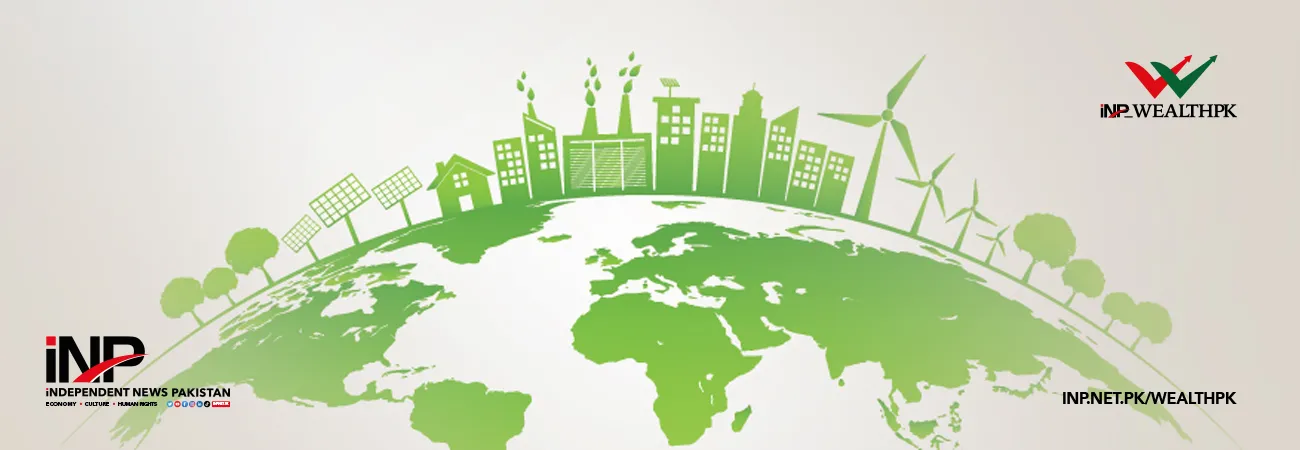INP-WealthPk
By Faiza Tehseen
Islamabad, Nov 01 (INP-WealthPK): Pakistan is an agrarian country with land farming constituting a sizable chunk of its economy. Agriculture contributes at least 24% to the country’s GDP, and is a handsome source of foreign exchange earnings. About 42.3% of the country’s labour force is absorbed in this sector as farm workers. Unfortunately, Pakistan’s arable lands are quickly giving way to the increasing housing and industrialization, which may expose it to food insecurity in the coming years.
According to the Kisan Board of Pakistan, the situation is getting worse for the arable lands in Pakistan due to the mushrooming housing societies and industrial units. For example, only in the Upper Punjab, 20% to 30% of fertile land has been consumed by the real estate sector and the newly developed industrial areas.
Comparatively, the situation is slightly better in southern Punjab and northern Sindh districts which are currently producing more than 50% of the country’s wheat, sugarcane and cotton.
(Source: https://data.landportal.info/news/2021/04/).
Pakistan’s agricultural land (% of land area) was reported 47.09% in 2018, according to the World Bank collection of development indicators, compiled from officially recognized sources.
 Pakistan - Agricultural land (% of land area) - actual values, historical data, forecasts and projections were sourced from the World Bank in the current month of October, 2021. (https://tradingeconomics.com/pakistan/agricultural-land-percent-of-land-area-wb-data.html).
Growing urban areas are causing land scarcity in Pakistan, leaving the country having only 0.32 acres of arable land per capita, and it will decline more by 2025 if new land is not brought into production. The situation of cultivated, uncultivated and cultural wasteland can be described well by the following table issued by the Statistical Bureau of Pakistan:
Pakistan - Agricultural land (% of land area) - actual values, historical data, forecasts and projections were sourced from the World Bank in the current month of October, 2021. (https://tradingeconomics.com/pakistan/agricultural-land-percent-of-land-area-wb-data.html).
Growing urban areas are causing land scarcity in Pakistan, leaving the country having only 0.32 acres of arable land per capita, and it will decline more by 2025 if new land is not brought into production. The situation of cultivated, uncultivated and cultural wasteland can be described well by the following table issued by the Statistical Bureau of Pakistan:
 According to the Economic Survey of Pakistan, Pakistan’s total forex resources are about $17.1 billion, out of which the agriculture sector’s share is $2007.3 million, which plays a vital role in the balance of payments.
Dry date, mango, kino, pine nut etc, garlic, chilli, potato, mint, aloe vera, coriander, mushroom have earned Pakistan a lot of foreign exchange. During the fiscal year 2019-20, exports of fruits and vegetables witnessed a jump of 12.5% worth $730 million in foreign exchange.
According to the Economic Survey of Pakistan, Pakistan’s total forex resources are about $17.1 billion, out of which the agriculture sector’s share is $2007.3 million, which plays a vital role in the balance of payments.
Dry date, mango, kino, pine nut etc, garlic, chilli, potato, mint, aloe vera, coriander, mushroom have earned Pakistan a lot of foreign exchange. During the fiscal year 2019-20, exports of fruits and vegetables witnessed a jump of 12.5% worth $730 million in foreign exchange.
 Pakistan: Distribution of gross domestic product (GDP) across economic sectors from 2010 to 2020
(Source:https://www.statista.com/statistics/383256/pakistan-gdp-distribution-across-economic-sectors/)
To cover up the loss due to the commercial use of arable land, and to keep the benefit of foreign exchange earning, Pakistan is in dire need to make strict laws barring the sale of arable land besides switching towards the hydroponic or soilless systems to enhance trade level and food needs. Soilless cultivation systems [hydroponic, aquaponic or hydroponic] are the best alternative to agri farming, as they consume less sources and less space.
To promote soilless cultivation systems, a few institutions like the University of Agriculture Faisalabad (UAF) and the Institute of Hydroponic Research developed near Rawat on the GT Road 30 kilometres away from Rawalpindi are actively working in collaboration with the state-owned Pir Mahar Ali Shah Arid Agriculture University.
By adopting the hydroponic system, our farmers can get higher yields of vegetables between 450 t0 550 tons per acre compared to traditional land farming with an average yield of 15 tons per acre.
Hydroponic or soilless farms are unique in their formation and the topmost benefit is that they can be established in places which are improper for traditional farming e.g., deserts, barren or wastelands, housetops, terraces etc using trays or steel pipes as a growing medium with addition of all necessary nutrients in solid or liquid state to produce above than normal yield.
In hydroponic system, mostly reverse osmosis is employed to ensure quality of water for a better yield. According to a UN report, the hydroponic system is more efficient, as the productivity is 2 to 5 times more.
It is a fact that despite being an agricultural country, Pakistan imports a large quantity of vegetables, which is a drain on foreign exchange reserves. Soilless farming is cost-effective, generates double income and is the most appropriate tool to alleviate poverty and ensure food security.
The future and prosperity of Pakistan depend on adaptation of innovative and viable cultivation technologies like soilless farming, which will eventually lead towards strengthening its economy. Now is the time for Pakistan to peep into this window of opportunity.
Pakistan: Distribution of gross domestic product (GDP) across economic sectors from 2010 to 2020
(Source:https://www.statista.com/statistics/383256/pakistan-gdp-distribution-across-economic-sectors/)
To cover up the loss due to the commercial use of arable land, and to keep the benefit of foreign exchange earning, Pakistan is in dire need to make strict laws barring the sale of arable land besides switching towards the hydroponic or soilless systems to enhance trade level and food needs. Soilless cultivation systems [hydroponic, aquaponic or hydroponic] are the best alternative to agri farming, as they consume less sources and less space.
To promote soilless cultivation systems, a few institutions like the University of Agriculture Faisalabad (UAF) and the Institute of Hydroponic Research developed near Rawat on the GT Road 30 kilometres away from Rawalpindi are actively working in collaboration with the state-owned Pir Mahar Ali Shah Arid Agriculture University.
By adopting the hydroponic system, our farmers can get higher yields of vegetables between 450 t0 550 tons per acre compared to traditional land farming with an average yield of 15 tons per acre.
Hydroponic or soilless farms are unique in their formation and the topmost benefit is that they can be established in places which are improper for traditional farming e.g., deserts, barren or wastelands, housetops, terraces etc using trays or steel pipes as a growing medium with addition of all necessary nutrients in solid or liquid state to produce above than normal yield.
In hydroponic system, mostly reverse osmosis is employed to ensure quality of water for a better yield. According to a UN report, the hydroponic system is more efficient, as the productivity is 2 to 5 times more.
It is a fact that despite being an agricultural country, Pakistan imports a large quantity of vegetables, which is a drain on foreign exchange reserves. Soilless farming is cost-effective, generates double income and is the most appropriate tool to alleviate poverty and ensure food security.
The future and prosperity of Pakistan depend on adaptation of innovative and viable cultivation technologies like soilless farming, which will eventually lead towards strengthening its economy. Now is the time for Pakistan to peep into this window of opportunity.













